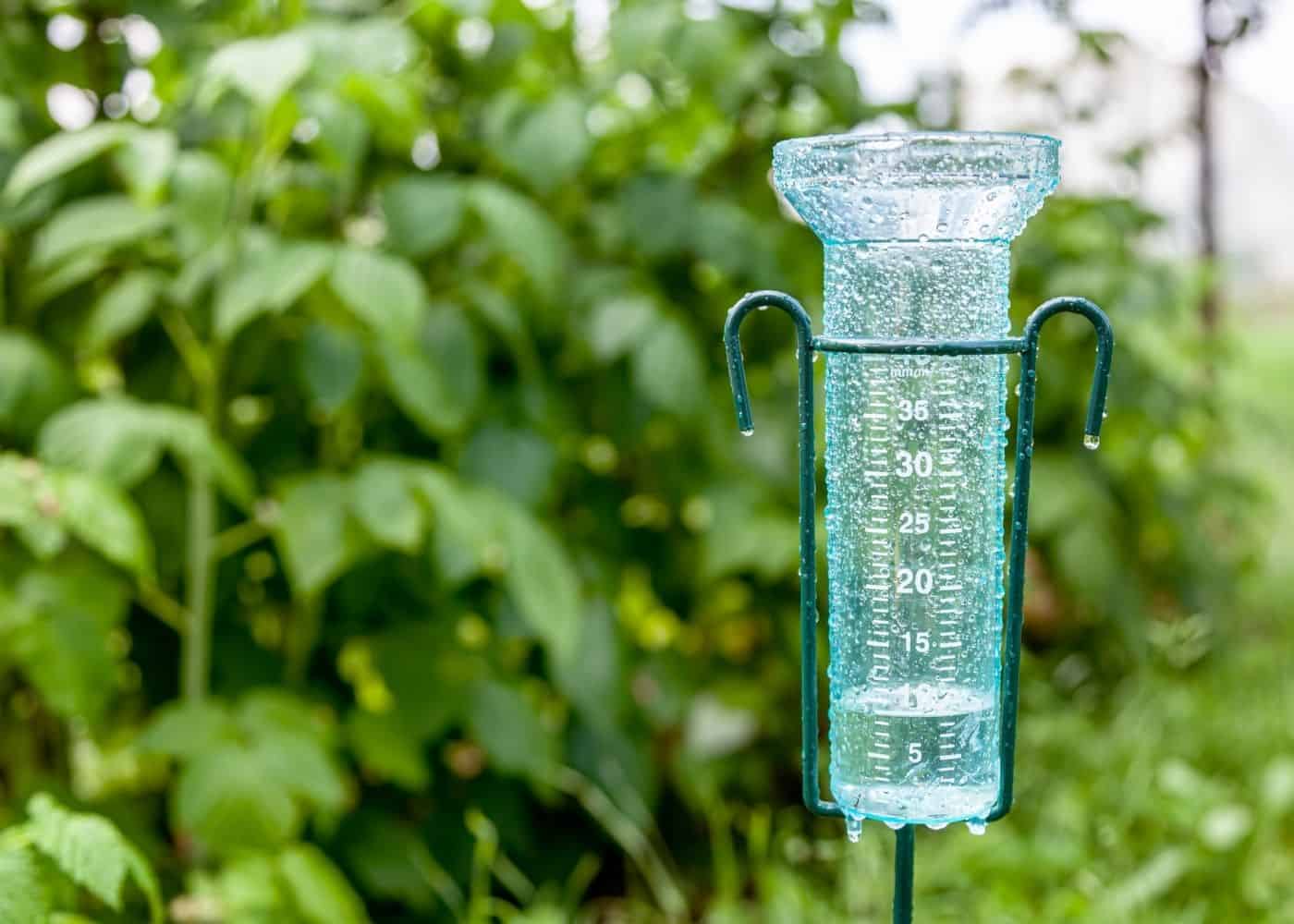Spring time is finally here! As the snow melts and the flowers begin to bloom, your little ones will likely be eager to explore the seasonal changes happening around them.
This fun DIY Rain Gauge Craft is a great simple science experiment for the next rainy day (or days!). It’s a great activity for you and your children to try out the next time it’s raining! This simple craft is an opportunity to get creative while learning about weather, measurement, and number recognition. It’s also a great experiment for preschool-aged kiddos!

What is a rain gauge?
This is an excellent activity for young scientists – Especially those who love playing in the rain! Learn why we think science for kids is so important in this post.
A rain gauge is a meteorological instrument that is used to measure rainfall over a specific time and area. Making a simple rain gauge is a quick activity for outdoor learning, and it’s perfect for younger children!
The next time you check the weather and see rain in the forecast, you can share the weatherman’s prediction with your children… And check to see how accurate it is for the space you live in! Creating your own rain gauge teaches children how rain is measured, which is something they may be curious about as they begin to understand weather systems and reports.
For an added learning opportunity, you can log your results. Take daily measurements for one week and see how much rain you had! Don’t forget to add the date!
How to make your own rain gauge:
Materials
Not much is required for this quick craft-ivity! All you need is:
- An empty plastic bottle
- A sharpie
- An Exacto knife (for adult helpers)
- A ruler
- A level surface to place your bottle
- Optional: Water-proof paint to decorate your creation
Steps
This is a pretty quick craft! If you would like to extend the time your children spend making their DIY rain gauge, I would suggest letting them decorate the outside of the bottle.
All you need to do is:
- Parents Only: Cut the top off of a water bottle
- I’d say a few inches from the top of the bottle is good. Save both the top of the bottle and the bottom part – You’ll need both!
- Flip the cut-off top piece upside down and place it inside the bottle (this will help funnel the rain). Make sure to take off the cap and check that the top is free of any debris that would prevent rain from entering the spout.
- Place some clean pebbles in the bottom of your container to weigh it down and keep it from tipping over in the wind.
- Cover the rocks with water to “calibrate” your rain gauge and create a flat, base level
- Mark the water line with a permanent marker. When you measure the rain, you will check how many inches of rain there are above this line (not from the bottom of the bottle!)
- This step is important so that your measurement starts at an even level, rather than filling up around the rocks naturally. Accurate measuring is an important skill!
- Using a sharpie and a ruler, mark out lines every half centimeter starting at 0 (where you filled the water to in step 3)
- This is a great time to sneak in some math talk! Your toddler can practice identifying numbers and can hold the ruler to help measure
- You may also want to talk about why you are starting at 0 and not 1
- Find a spot to place your craft outside where your bottle won’t fall and begin measuring!
There you have it! Now you have a gauge to measure rainfall and you’ve practiced some important science and math contepts. Be sure to check on your bottle throughout the day and watch it as it fills up!
Extending learning
Here are some ways that you can extend this quick craft, whether you need to make it more challenging or you want to prolong the fun.
Talk about why rain gauges are important
Ask your children why we need to measure the amount of rain that falls from the sky. Here are some topics you could explore with them that show why rain gauges are important:
- Tracking weather day to day and year to year
- Effective weather monitoring helps us predict what kind of weather patterns to expect each year and alerts us to changes in the world around us
- Farmers rely on weather a lot
- Many of the foods we eat are grown in the spring, summer, and fall. It is important for farmers to know how much it will rain so they can water their crops accurately. This helps them grow and prevents them from drying out or being over-watered!
- Predicting the weather helps us plan in case of floods or droughts
And, talk about why we get rain in the first place!
Why do we even have rainy days? Making this craft is a fun entryway into a conversation about rainfall. You can talk about how clouds hold water, how the ground and trees use the water once it falls, and even talk about the difference between rain and snow. There is a lot of earth science potential here!
Ask your kiddos why they think it rains a small amount some days, but others there is a heavy downpour?
Create a Weather Tracking Graph
If there’s lots of rain in the forecast this week, you and your children can create a graph to track how much rainfall there is each day. Check on the rain gauge each day, write down how many centimeters of rain fell, and pour it out for the next day! You could even collect it all in a big tub if you wanted. Just make sure to put a lid on it so that there’s no evaporation or it doesn’t fill from rainfall.
From here you can talk about which days had the most rain, the least, or maybe which time of day they noticed it raining the most.
To accurately record your results, I would create a simple rainfall tracking sheet (or use a template from online). Record the important data: the date, the centimeters of rainfall each day, and a space to add it up at the end of the week. This is a great opportunity to practice scientific observation skills (as well as math skills like graphing!).
Brainstorm ways to save water
So you’ve collected water, now what? Have a conversation about why people might use big containers to collect water and what they might use water for.
Perhaps you have plants or a garden that needs watering? Maybe you have some veggies to clean before bringing them in to eat? See what else your littles can think of!
Other posts you may enjoy:
- More Rainy Day Activities For Toddlers
- Water-based science
More science posts
Searching for more science experiments and science-related activities to do with your little ones? Check out this category to see all of our posts about science for kids!

Leave a Reply